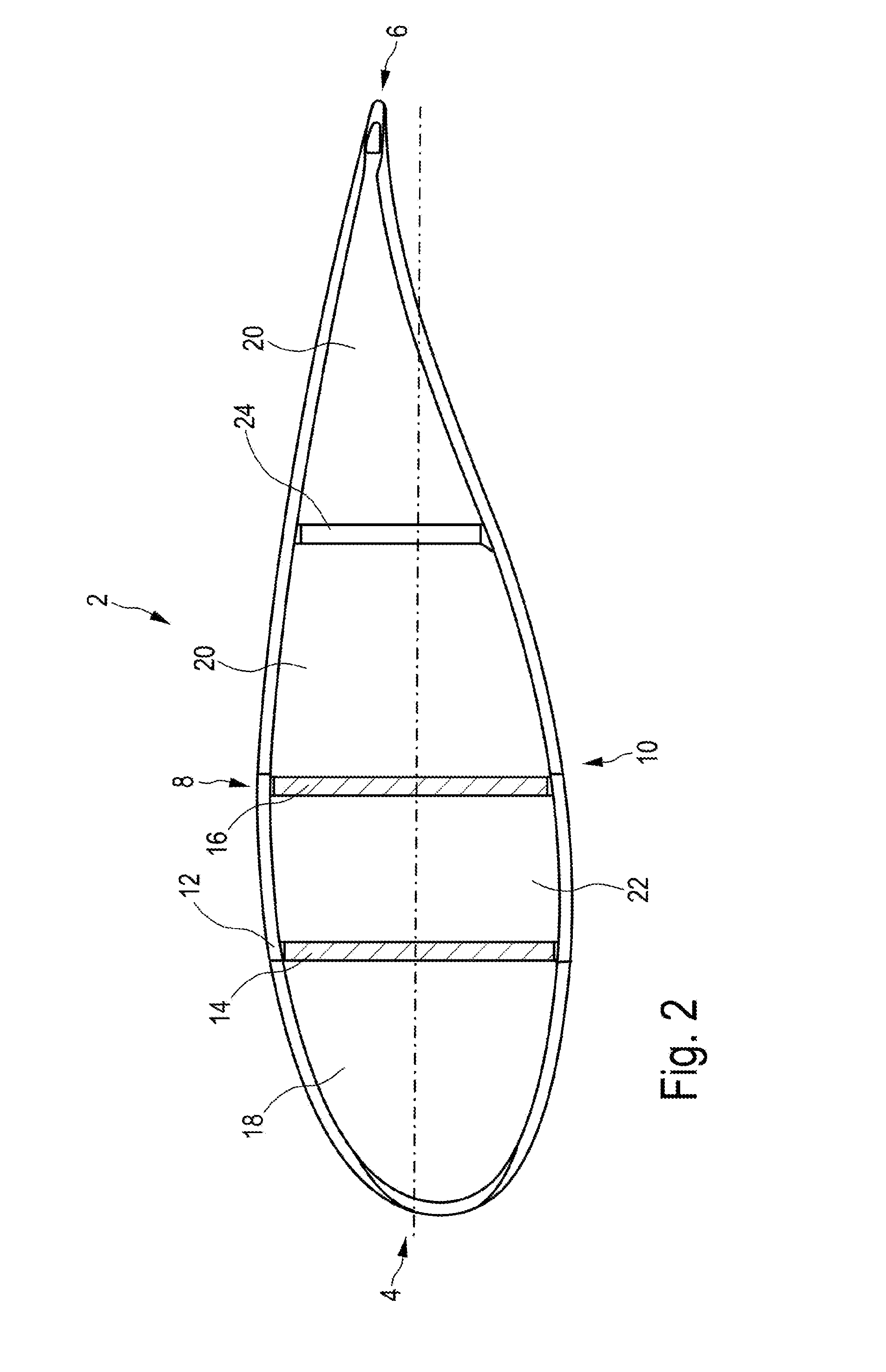Rotor blade of a wind turbine
a technology of wind turbine and rotor blade, which is applied in the direction of liquid fuel engines, vessel construction, marine propulsion, etc., can solve the problems of large rotor blades that are difficult to transport, the width of the rotor blade in the root region of the rotor blade may also be at issue, and the length of the rotor blade is at issue, so as to achieve the effect of increasing the overall heating power
- Summary
- Abstract
- Description
- Claims
- Application Information
AI Technical Summary
Benefits of technology
Problems solved by technology
Method used
Image
Examples
Embodiment Construction
[0049]FIG. 1 shows a wind turbine 100 with a tower 102 and nacelle 104. A rotor 106 with three rotor blades 108 and a spinner 110 is located on the nacelle 104. When in operation, the rotor 106 is brought to a rotating movement by the wind and thereby drives a generator in the nacelle 104.
[0050]FIG. 2 shows a cross-section of a rotor blade 2 having a rotor blade nose 4 and a rotor blade rear edge 6. The illustrated cross-section shows a profile of the rotor blade 2 approximately in the middle region thereof with respect to the longitudinal direction of the rotor blade. Moreover, the profile has a suction side 8 and a pressure side 10. A first and a second stiffening partition 14 or 16 respectively inter alia are provided in order to stiffen the outer shell 12. Both stiffening partitions 14 and 16 are hatched and thereby represented as cut elements, and they form continuous walls and divide the rotor blade 2, at least in the region shown, into a first cavity 18, which faces the rotor...
PUM
| Property | Measurement | Unit |
|---|---|---|
| Fraction | aaaaa | aaaaa |
| Fraction | aaaaa | aaaaa |
| Length | aaaaa | aaaaa |
Abstract
Description
Claims
Application Information
 Login to View More
Login to View More - R&D
- Intellectual Property
- Life Sciences
- Materials
- Tech Scout
- Unparalleled Data Quality
- Higher Quality Content
- 60% Fewer Hallucinations
Browse by: Latest US Patents, China's latest patents, Technical Efficacy Thesaurus, Application Domain, Technology Topic, Popular Technical Reports.
© 2025 PatSnap. All rights reserved.Legal|Privacy policy|Modern Slavery Act Transparency Statement|Sitemap|About US| Contact US: help@patsnap.com



